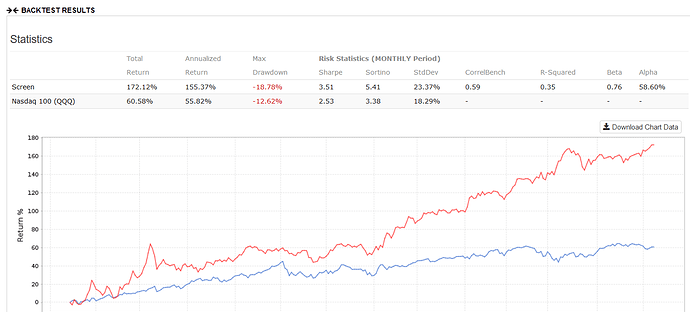[quote]
I think the obvious problem is say a large growth has a P/E of 30, in 5 years it will be a P/E of 10 at today’s prices.
[/quote]True. When Google was trading at a PE of 15, I was very tempted to buy it. I knew at the time that large growth was set to outperform. But that’s not my game. I was hoping to make more in small caps, and I did. Until mid 2018. But Google is a rare stock. Most fast growers mean revert and underperform expectations.
[quote]
A small value has a P/E of 5 , in 5 years it will be out of business or have earnings much lower than today.
[/quote]Is that really true? It depends on the stock. Mean reversion tells us that today’s slow growing stocks will be stronger tomorrow. (With the caveat that this only applies to profitable stocks).
As a group? Probably. But I am looking for the exceptions. Besides, could it be that value stocks as a group have declined in earnings because the profitable stocks have been bought out? If that is the case, then the decline in earnings does not tell us about the remaining good ones.
[quote]
Most value stocks, dare I say, are not that cheap.
Not many stocks pay a dividend of more than 10% (that’s not going to be cut immediately), that is also not having declining earnings.
Even if you get a 10% yield, after tax it’s like 8% yield. Not worth the risk if the earnings decline.
[/quote]Whatever is not cheap is by definition not a good value. That’s why I have never in vested in the value index. [EDIT: I don’t agree with the way indexes define value, I think I can do better with P123.] All you need is to find a small basket of [truly] very cheap stocks and you are good to go.
[quote]
For the most part, if a company just maintains 0% growth forever, they will have declining earnings. Because labor and cogs cost inflation is 2% a year. You basically need to grow or you will die eventually one day.
[/quote]Right, you need to grow profits about as fast as inflation just to keep from shrinking earnings. But investment growth does not solely depend on earnings growth. Your hypothetical stock should grow as fast as its earnings yield. If you a buy a stock with 2% growth at a P/(owner earnings) of less than 10, you will have very good results. Your growth is 12%+ a year without P/E expansion and you have a free option on P/E expansion (or a buyout). Some of those options will be exercised.
Just to be clear: I am not calling a bottom here yet in small value. I don’t yet know when the bottom will be. But the longer the party lasts for large growth, the bigger the party will be for small value when it’s turn comes.
Business quality and/or growth by itself is not enough of an argument in favor of buying large growth. It’s just the human brain trying to pin a reason on the recent outperformance of large growth. I think that growth/quality has been part of the reason, but the primary reason has been the value of large growth stocks. Yes, large growth stocks were actually an incredibly good value back in 2012 or so. Not because of cheap PEs but because of cheap price to future earnings. Since then large growth has benefited from growth, PE expansion, profit margin expansion, and now safety (since large companies are more likely to survive this recession). My impression is that the news has not yet been priced into the markets, partially because of massive direct government buying. I am not making a prediction as to the timing, but small value will once again have its day in the sun, despite all the arguments now favoring large growth as an asset class.
That said, if I had a reliable system to use for investing in large growth I would have done so a year ago. I don’t. So am being defensive while waiting for the tide to turn.

